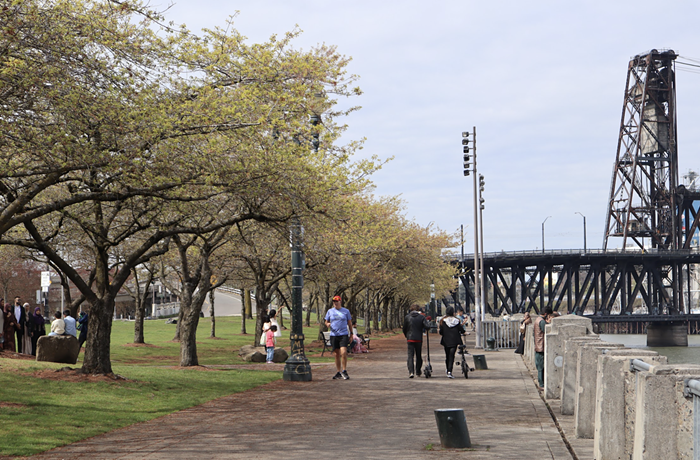For decades, Salem-based artist D.E. May has been creating thoughtful and understated art that is equally indebted to minimalism as it is to architectural drafts. Testbeds, his most recent body of work on display at PDX, reveals the artist entranced as ever by the sheer formalism of clean geometric lines. In these new grids and templates, he seems to revel in the endless permutations he can create, while remaining restricted to a few basic shapes and a handful of muted colors. One imagines May's creative process borders on the monastic in its simplicity and narrowly focused aesthetic vision. But examining this work is a meditative experience for viewers, too, who witness the boundaries of what can be done with such spare means pushed and pulled into surprising results.
While May seems content for his creations to be mere objects that do not point beyond their own materiality, there are some aspects of the works that lead viewers to interpret them as representations. Many of his pieces are grid surfaces, full of hatch marks and measurements, conjuring architectural blueprints for some indiscernible interior space. But that suggestion quickly dead-ends, as viewers grope to identify what the plan depicts or where, if at all, it will be built. Likewise, a series of May's templates—obliquely angled, exactingly die-cut shapes—suggest that they serve a practical purpose, most likely as a traceable mold to fabricate some object or part. But again, the patterns point only toward more abstraction. In that sense, they occupy peculiarly inconsistent positions. They simultaneously claim to be preliminary plans for unrealized constructions and, as art objects, the end result of the creative process.
In the past, one of the most intriguing aspects of May's constructions has been their worn and weathered surfaces. But the majority of this new work lacks that lived-in quality. Only two cardboard assemblages in the gallery's south windows retain this. These two tiny "testbeds" look as if May has carried them around in his wallet for the past several years, occasionally taking them out to examine the exquisite wear of their creases and frayed edges. Not that it would be too surprising to learn that were true; such a reflective appreciation of restrained and uncluttered composition runs through all of May's work.












